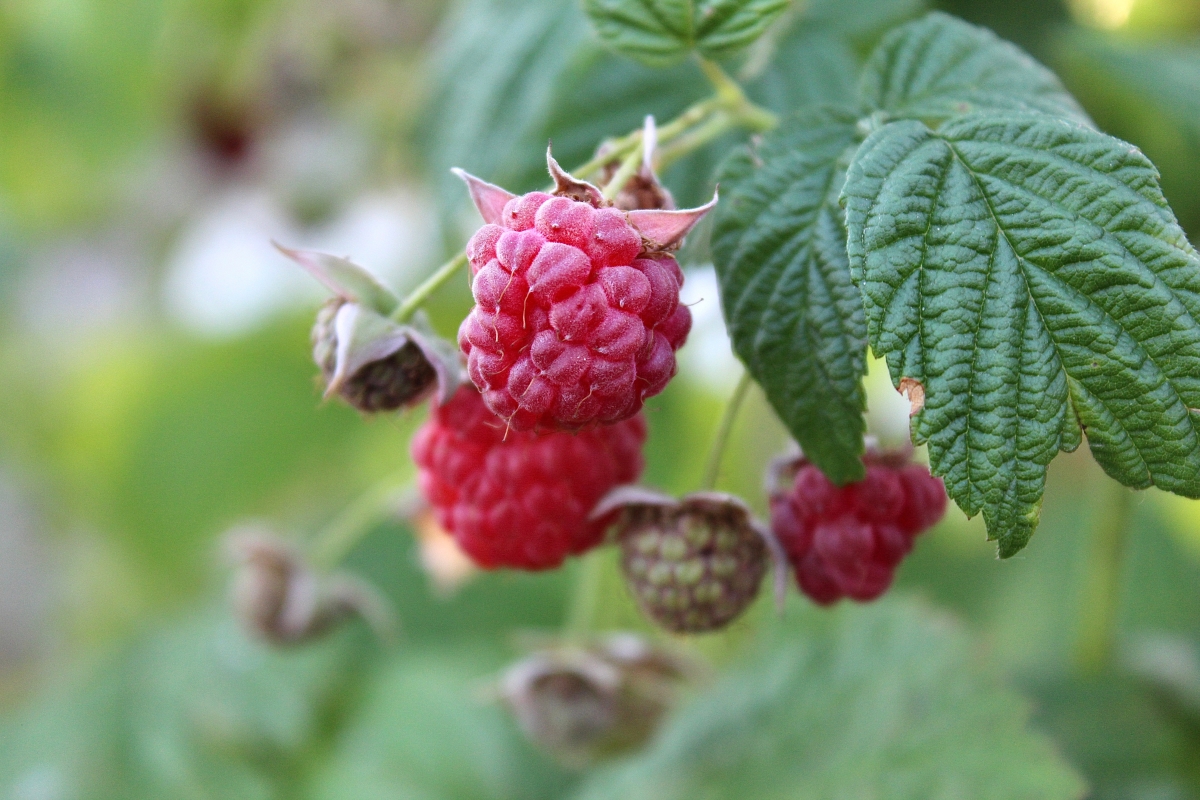Wild raspberries are a delicious and nutritious addition to any diet, but are they safe to eat? This article will explore the safety of the raspberries you find wild, including potential risks, precautions to take, and tips for identifying and harvesting the fruit. Whether you’re a seasoned forager or a curious berry-lover, this guide will help you safely enjoy the delicious taste of wild raspberries.
- Different Types of Wild Raspberries
- Wild Red Raspberry (Rubus Idaeus)
- Wild Black Raspberries (Rubus Occidentalis)
- Are Wild Black Raspberries the Same as Blackberries?
- Are Wild Black Raspberries the Same as Mulberries?
- Are Wild Raspberries the Same as Dewberries?
- Are Wild Raspberries the Same as Cloudberries?
- Are Wild Raspberries the Same as Wineberries?
- Where in the World You Can Find Wild Raspberries?
- History and Use of Wild Raspberries
- How to Recognize and Identify Wild Raspberries?
- Are Wild Raspberries Edible?
- The Nutritional Content of Raspberries
- Health Benefits of Eating Raspberries and Other Edible Wild Berries
- Risks of Eating Wild Raspberries - Can You Get Sick From Eating Wild Raspberries?
- Is it Safe to Eat Wild Raspberries off the Bush?
- How to Safely Eat Wild Raspberries
- Storage and Shelf Life of Wild Raspberries
- Raspberries Lookalikes - Is There Any Risk of Confusion With Poisonous Berries?
- Sources
Different Types of Wild Raspberries
Apart from the common red wild raspberries found in grocery stores, there are many other varieties of wild raspberries native to North America. Black wild raspberries can be found in thick woodlands, while golden and purple varieties are also available. Salmonberries are another type of wild raspberry, particularly in the Pacific Northwest. No matter the color or variety, wild raspberries may be safe to eat. However, it is important to take extra precautions before eating them.
Wild Red Raspberry (Rubus Idaeus)
Common names:
- American red raspberry
- Black-haired red raspberry
- Brilliant red raspberry
- Raspberry
- Red raspberry
- Smooth leaf red raspberry
- Wild raspberry
- Wild red raspberry
- Gray leaf raspberry.

Wild Black Raspberries (Rubus Occidentalis)
Other names for this plant include:
- Bear’s eye blackberry
- Blackcap raspberry also known as black caps
- Scotch cap.
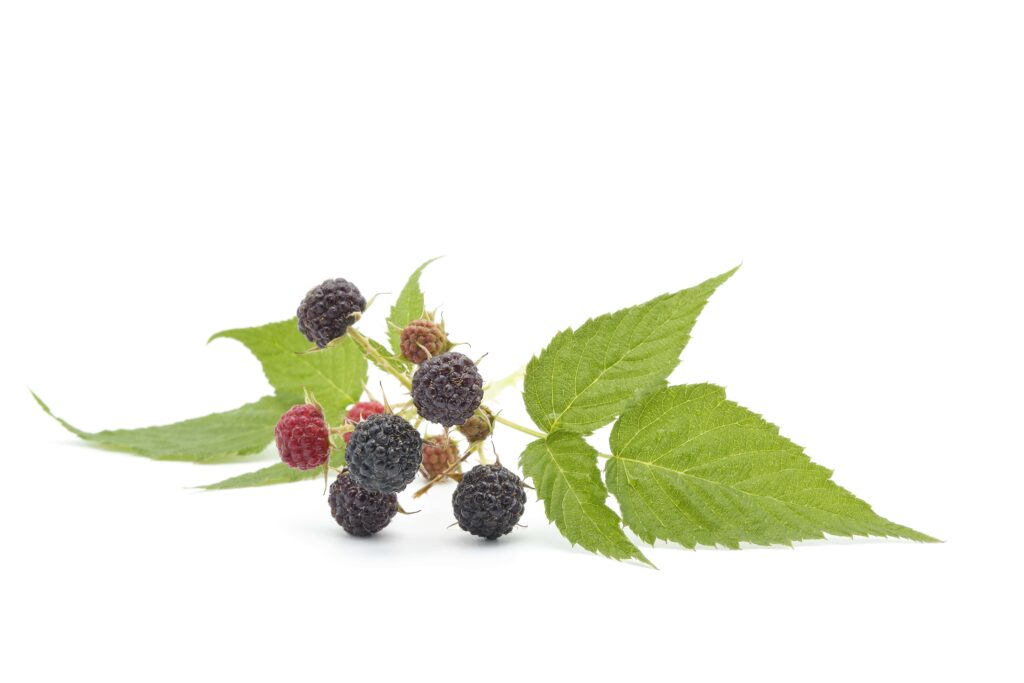
Wild black raspberries are also edible, and they are full of healthy ingredients. They contain vitamins, minerals, fiber, and other beneficial compounds. These black raspberries are delicious and can be enjoyed just like the red wild raspberries. They may have even more antioxidants than the red variety! However, it is important to be mindful of their thorns when harvesting them. Like their red counterparts, wild black raspberries can grow in the wild in many climates, including the northern hemisphere.
The fruits are fleshy, sweet, and a little tart; they come off the receptacles cleanly and easily. They taste great.
Are Wild Black Raspberries the Same as Blackberries?
No, wild black raspberry and blackberry are not the same sorts of berries even if they both are related wild edibles. In common, the berries belong to brambles and are both made into delicious jams. Though wild blackberries and raspberries look similar, there are notable differences between them. Blackberries are usually larger than black raspberries and have no hollow center at the top of the fruit. In a side-by-side taste test, you should find that black raspberries are sweeter while blackberries are tarter. Furthermore, the stems of the black raspberry are round and covered with small hairs, while the stem of the blackberry is ridged. Lastly, the Blackberry fruit pulls away from the plant when it is ripe away, while the raspberry remains attached.
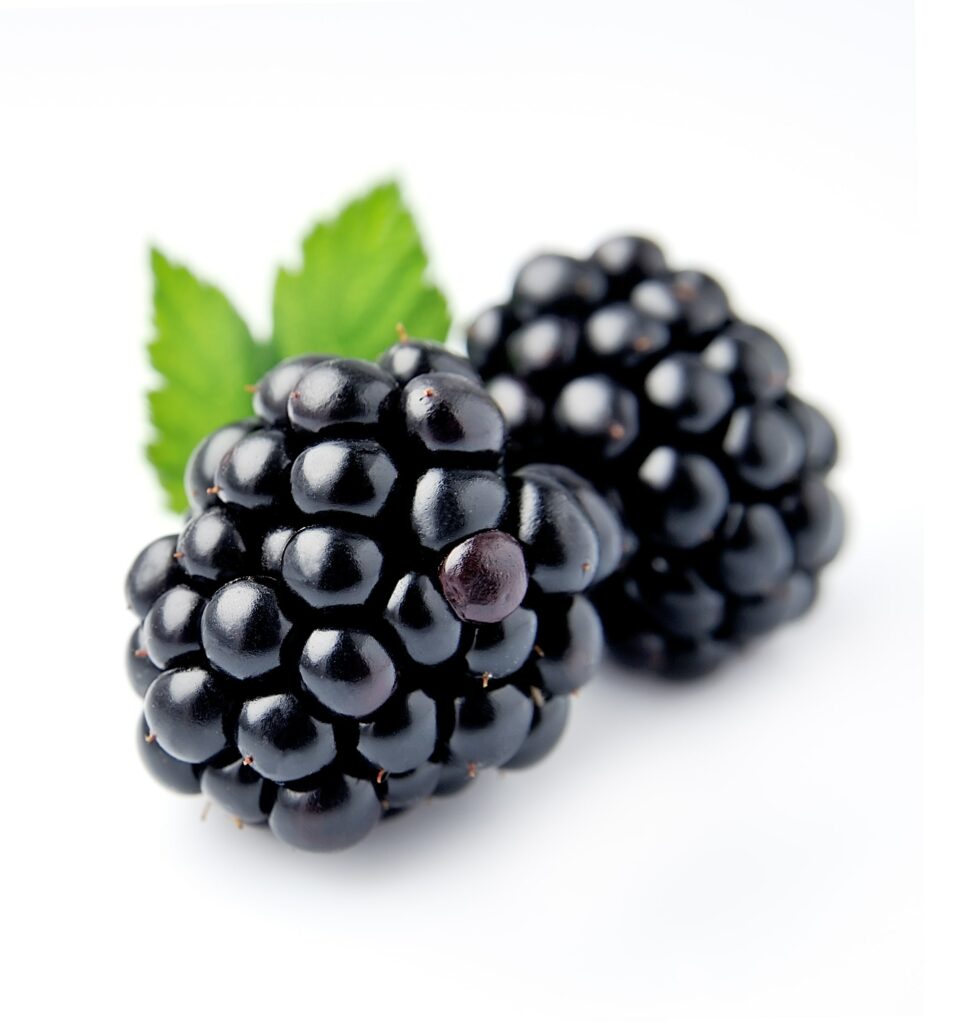
Blackberry leaves are palmate; meaning the leaflets spread out from one point. The prickles on Blackberries are also much more prominent, and the underside of the leaves are less pale than Raspberry leaves. Furthermore, the Blackberry fruit is a shiny purple-black color, and the flesh doesn’t separate away from the core when picked.

Photo: Ivar Leidus, CC BY-SA 4.0 https://creativecommons.org/licenses/by-sa/4.0, via Wikimedia Commons
Are Wild Black Raspberries the Same as Mulberries?
No, mulberries and wild raspberries are not the same. They are two distinct species. Mulberries are a type of berry, also safe to eat, that grows on a deciduous tree, while wild raspberries are a type of berry growing on a bush. They also differ in their taste and look. The mulberries are dark purple or black and have a more elongated shape.
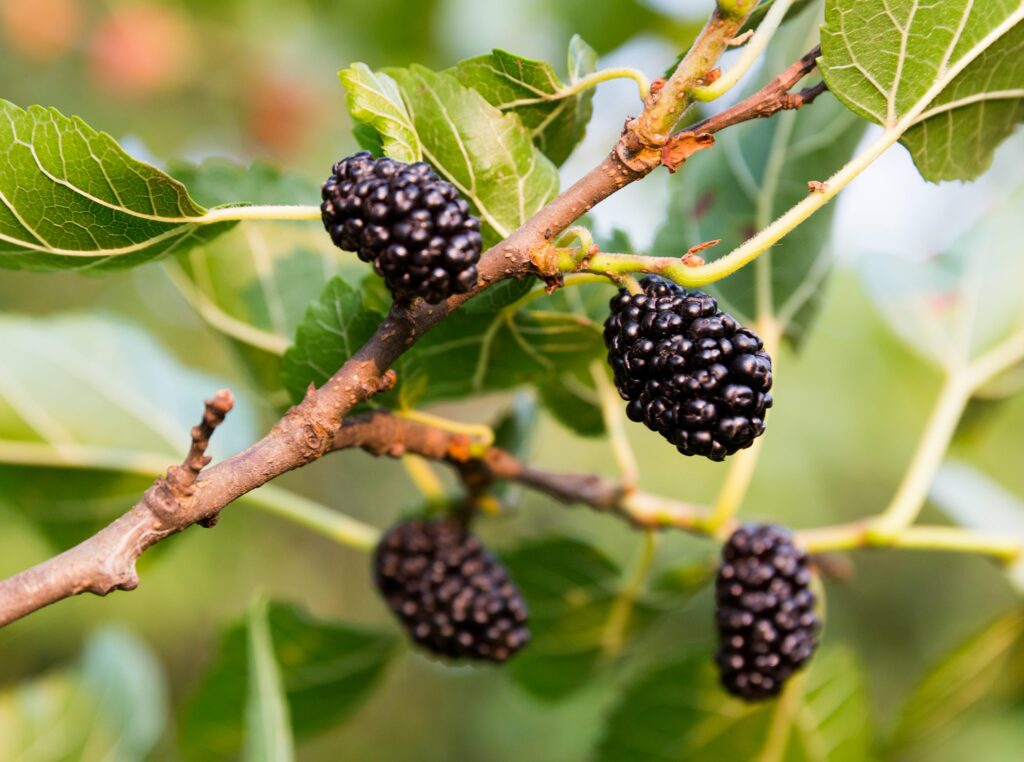
Are Wild Raspberries the Same as Dewberries?
No, but dewberries are a berry of species in the genus Rubus, closely related to blackberries. They are small, trailing (rather than upright or erect) brambles with aggregate fruits that look like raspberries, but are usually purple to black instead of red. Alternatively, they may be called ground berries.
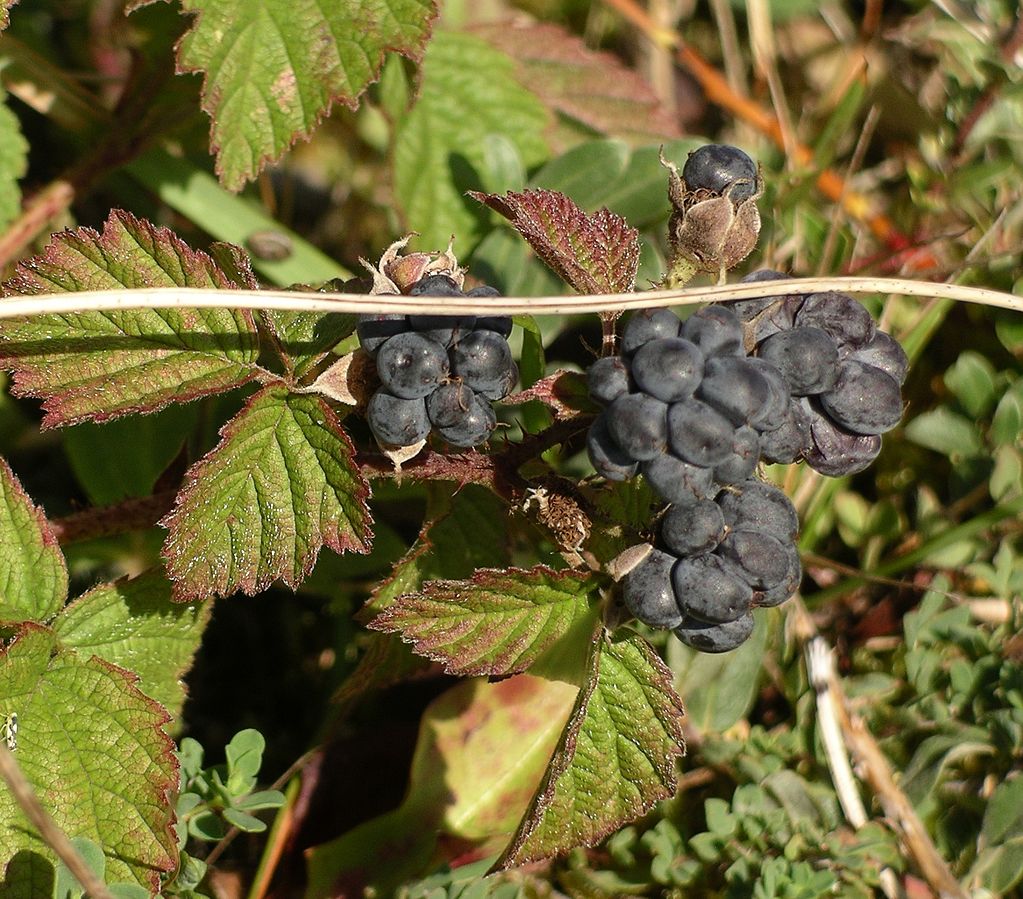
Photo: Public domain, via Wikimedia Commons
Are Wild Raspberries the Same as Cloudberries?
No, Cloudberries (Rubus chamaemorus) are a species of flowering plant in the rose family (Rosaceae). It is native to cool temperate regions, alpine and arctic tundra, and boreal forests. This perennial herb produces edible fruits that are amber in color and resemble blackberries. Common English names for the fruit include cloudberry, nordic berry, bakeapple (in Newfoundland and Labrador), knotberry and knoutberry (in England), aqpik or low-bush salmonberry (in Alaska-not to be confused with salmonberry, Rubus spectabilis).
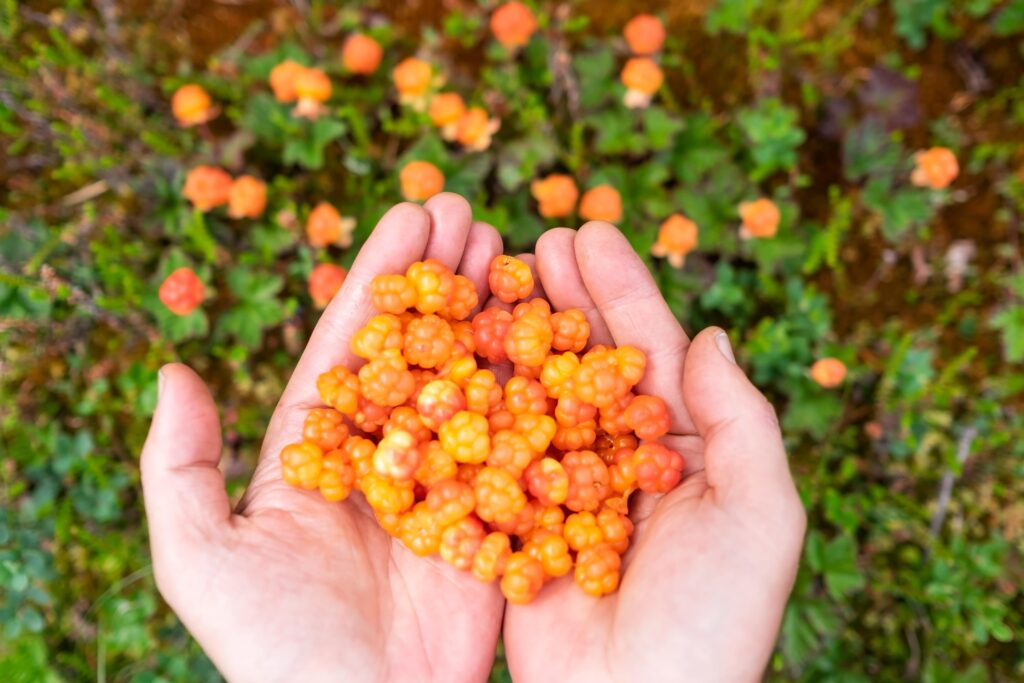
Are Wild Raspberries the Same as Wineberries?
Rubus phoenicolasius, also known as Japanese wineberry, wine raspberry, wineberry, or dewberry, is an Asian species of raspberry in the rose family. It is native to China, Japan, and Korea, but was introduced to Europe and North America as an ornamental. It has since escaped cultivation and become naturalized in some parts of Europe and North America.
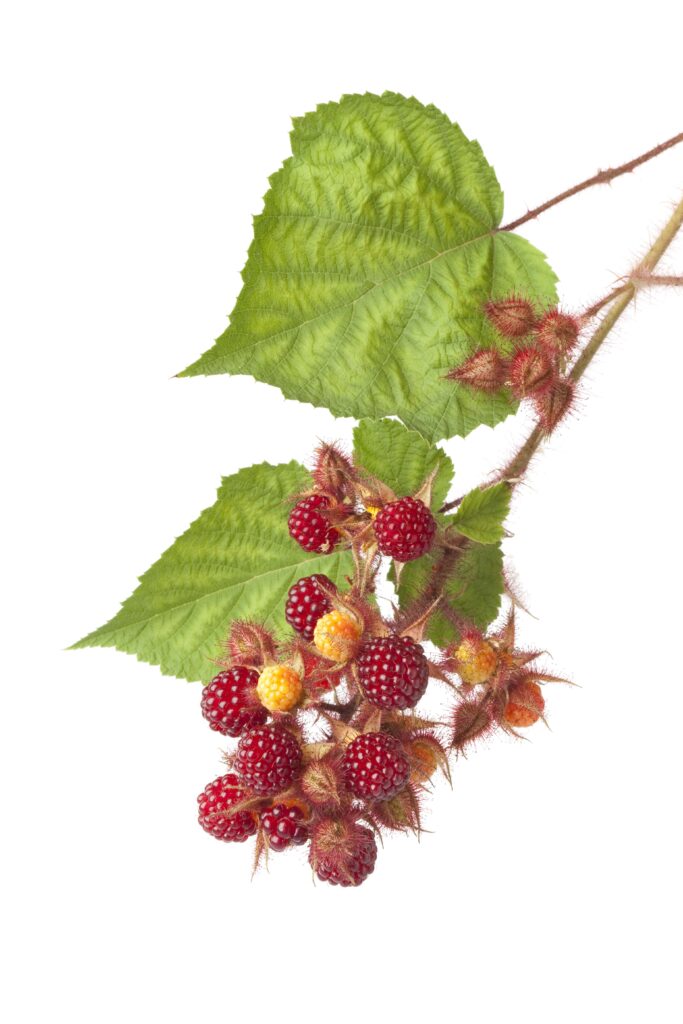
Where in the World You Can Find Wild Raspberries?
The native American red raspberry is Rubus idaeus subsp. strigosus. They have a bright red color and are quite sweet when ripe. They can be found in many different regions and are popular for foraging. The red wild raspberry is found throughout most of the world’s temperate regions. In North America, it grows from Alaska to Newfoundland, southward to North Carolina and Tennessee in the East, and to Arizona, California, and northern Mexico in the West.
History and Use of Wild Raspberries
The American red raspberry is a delicious fruit that has been traditionally eaten by many Native American peoples. It was eaten fresh or preserved for winter use. Raspberries make excellent jams and jellies and provide flavorful additions to pies and other baked goods, candies, tea, and dairy products.
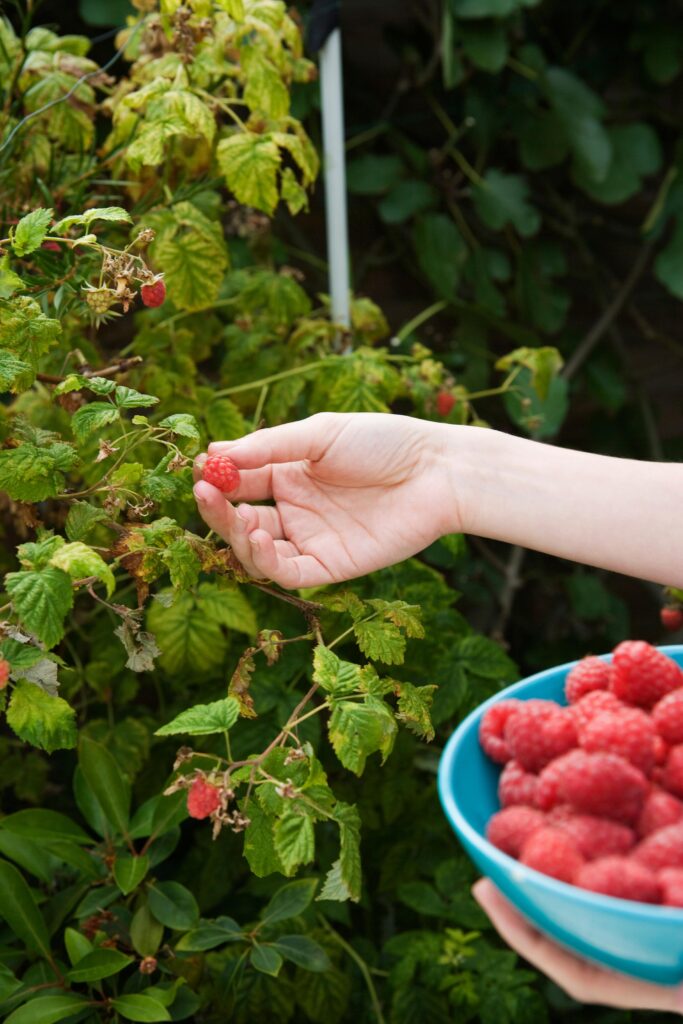
Approximately 0.27 quarts (250 ml) of wild American red raspberry fruit can be hand-harvested within 30 minutes in good stands. The fruit, bark of roots, and stems of raspberries have been used to make various medicinal preparations. People enjoy picking wild raspberries for jam, pies, smoothies, and other recipes.
In herbal medicine, it has been used as a decongestant, an anti-inflammatory, an aid to childbirth, to strengthen the uterus, to relax the uterus, to cause contractions, to ease painful menstruation, and to treat tonsillitis, wounds, sores, burns, and ulcers.
Younger leaves of red wild raspberries can be used to make herbal teas.
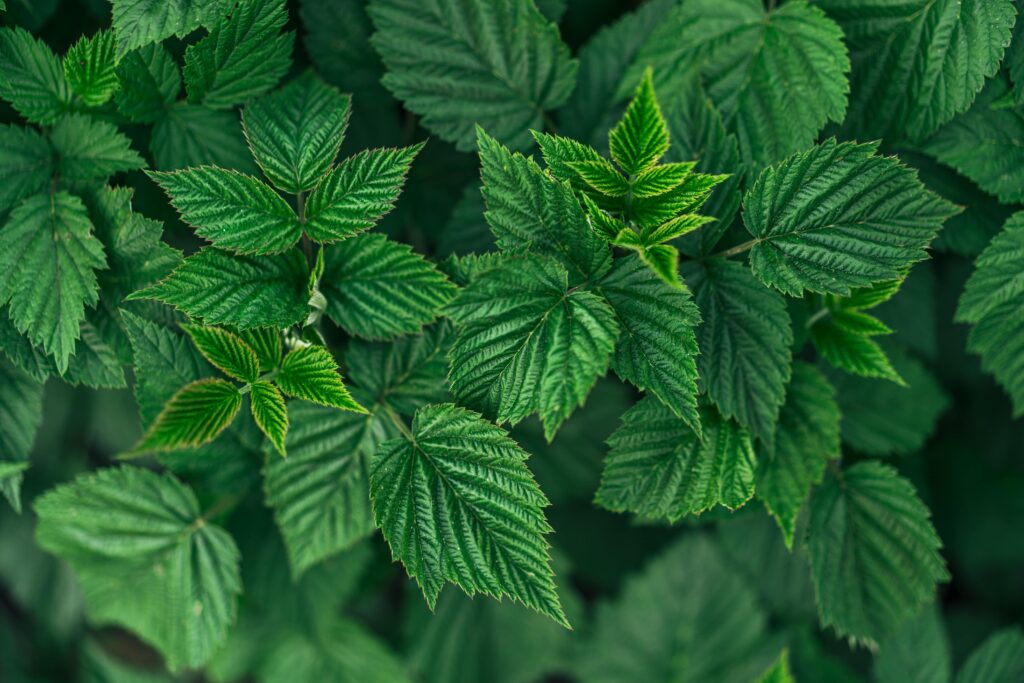
The berries can be used in facemasks and to make a purple dye. Paper has also been made from stem fiber.
A diverse range of wildlife species uses wild raspberries for both food and shelter. The berries are produced late in the summer. The raspberry plant provides a significant food source for pollinators, particularly bees.
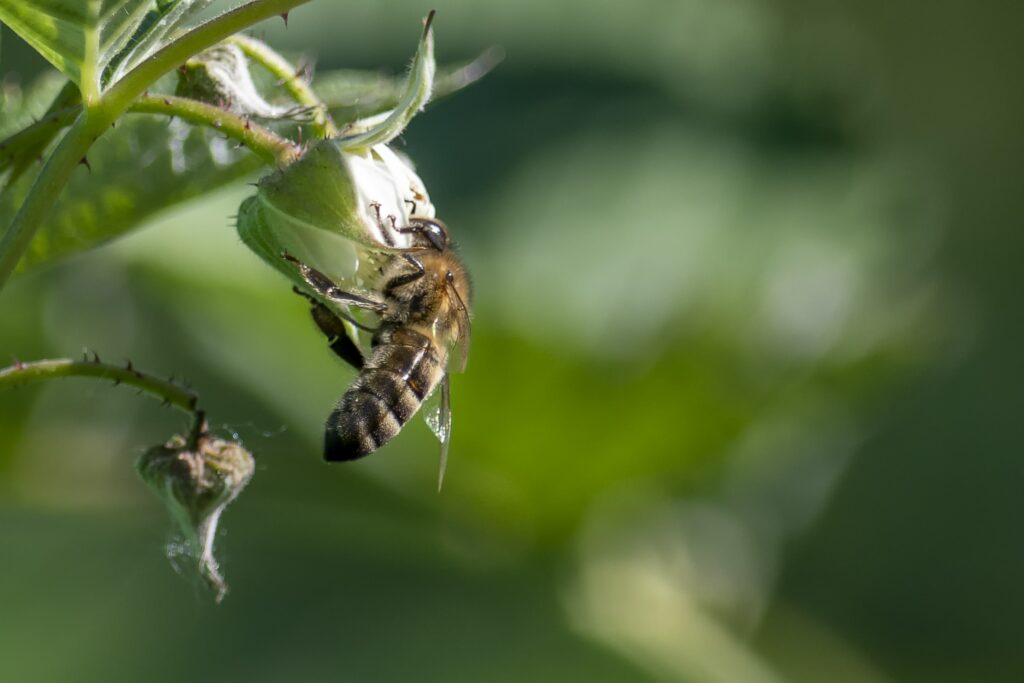
How to Recognize and Identify Wild Raspberries?
There are many wild berries, and you need to recognize wild raspberries to make sure you are picking the right ones.
The plant is a thorny shrub (a woody plant with multiple stems growing from the base). The stem can reach up to 160cm. The plant has spines, prickles, or thorns. The leaf blade is a compound (made up of two or more discrete leaflets). The edge of the leaf blade has teeth. The leaves are compounded with five to seven serrated leaflets. The leaves drop off in winter (or they wither but persist on the plant).
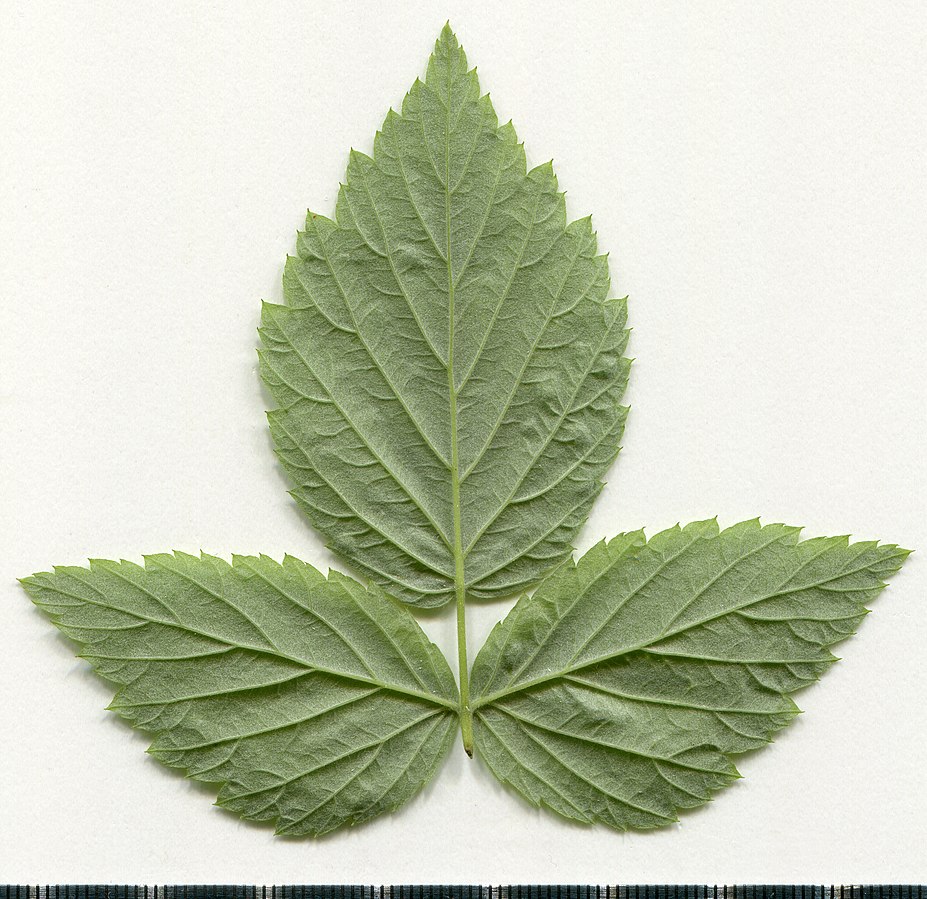
Photo: Dmitry Makeev, CC BY-SA 4.0 https://creativecommons.org/licenses/by-sa/4.0, via Wikimedia Commons
The raspberry plant is biennial. The first year’s shoots are unbranched with soft spines. Second-year shoots are branched and fine-grained and here come the flowers which will then become berries in the summer. The underside of the leaf is felt-haired, grey. The habitats of raspberries include forest edges, forests, meadows, and fields, shores of rivers or lakes, shrublands or thickets, swamps, and wetland margins (edges of wetland).
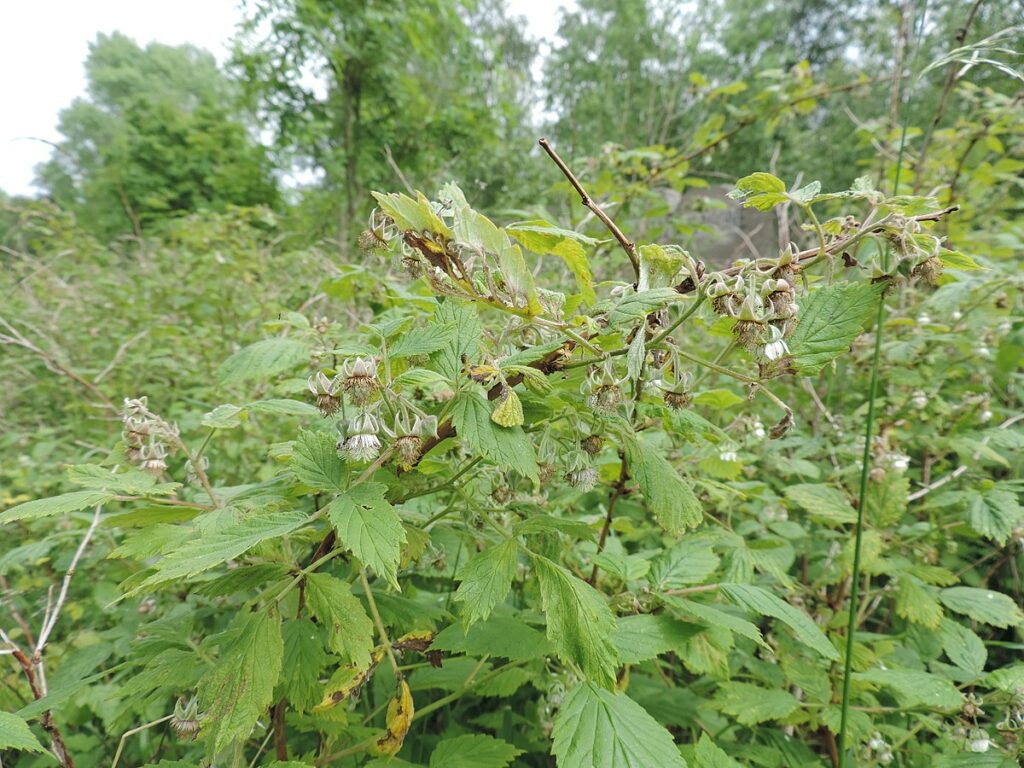
Photo: Krzysztof Ziarnek, Kenraiz, CC BY-SA 4.0 https://creativecommons.org/licenses/by-sa/4.0, via Wikimedia Commons
Raspberries grow in clusters on small bushes in thickets. Raspberries are aggregate fruits that develop from the many individual carpels of a single flower. The small, whitish flowers of the raspberry bush are often hidden under the leaves and are inconspicuous with their narrow petals.
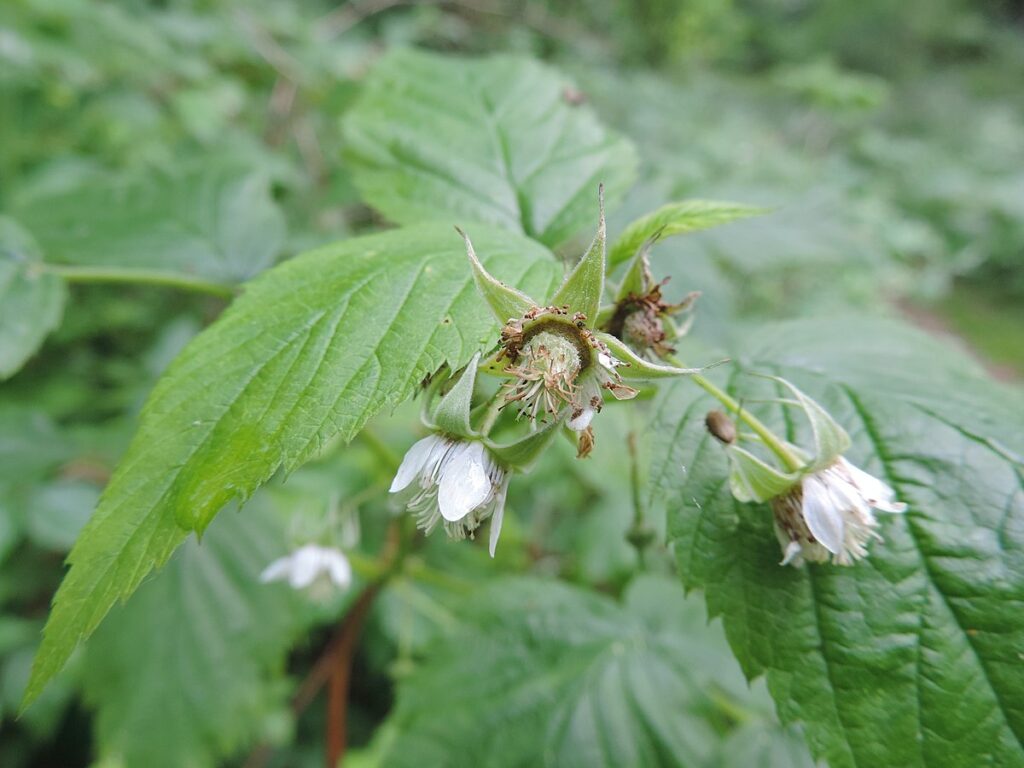
Photo: Krzysztof Ziarnek, Kenraiz, CC BY-SA 4.0 https://creativecommons.org/licenses/by-sa/4.0, via Wikimedia Commons
The berries have multiple spherical segments (drupelets). What separates raspberries from their blackberry relatives is if the torus (receptacle or stem) “picks with” (i.e., stays with) the fruit. When picking a blackberry, the torus stays with the fruit. With raspberries (both black and red berries), however, the torus remains on the plant, leaving a hollow core in the raspberry.

Are Wild Raspberries Edible?
Yes, wild raspberries are edible and can be enjoyed in many ways. However, some risks associated with eating wild raspberries should be considered before consuming them (see below). As with any type of wild edible berry, it is important to identify the species correctly before consuming them. Wild raspberries come in several different varieties, including red and black. They are generally sweet and tart and can be added to salads, baked goods, and smoothies. In addition to their delicious taste, they also contain beneficial vitamins and minerals. However, some risks associated with eating wild raspberries should be considered before consuming them.

How Do I Know if the Raspberries Are Ripe to Eat?
To know if raspberries are ripe to eat, look for berries that are brightly colored, full and round, and have a slight firmness when touched. When picking the berries, they should come off the stem easily. If you have to tug, it isn’t ripe. The berries should also be slightly swollen, bright red, and may have a dusty coating. Additionally, it’s best to pick raspberries when it is dry and cool – not raining and ideally after the heat of the midday sun. Lastly, taste a few of the raspberries to ensure they are sweet and juicy.

The Nutritional Content of Raspberries

Raspberries don’t have many calories. The berries contain mostly water, around 85 percent, and the rest is sugar like glucose, fructose, and sucrose. A bowl of 70 fresh raspberries is only 100 calories – so this is a natural snack you can indulge in without feeling guilty.
| Nutritional content per 100 g raspberries | |
|---|---|
| Water | 85.6 g |
| Energy | 57 kcal |
| Nitrogen | 0.16 g |
| Protein | 1.01 g |
| Fat (Total lipid) | 0.19 g |
| Ash | 0.35 g |
| Carbohydrates: | |
| Carbohydrate, by difference | 12.9 g |
| Sugars, Total | 2.68 g |
| Sucrose | <0.25 g |
| Glucose | 0.99 g |
| Fructose | 1.68 g |
| Lactose | <0.25 g |
| Maltose | <0.25 g |
| Galactose | <0.1 g |
| Organic acids: | |
| Citric acid | 1740 mg |
| Malic acid | 54 mg |
| Oxalic acid | <40 mg |
| Pyruvic acid | <40 mg |
| Quinic acid | <40 mg |
| Minerals: | |
| Calcium, Ca | 16 mg |
| Iron, Fe | 0.45 mg |
| Magnesium, Mg | 19.2 mg |
| Phosphorus, P | 27 mg |
| Potassium, K | 156 mg |
| Sodium, Na | <2.5 mg |
| Zinc, Zn | 0.22 mg |
| Copper, Cu | 0.053 mg |
| Manganese, Mn | 0.494 mg |
| Vitamins and Other Components: | |
| Vitamin C, total ascorbic acid | 23 mg |
| Biotin | 3.43 µg |
Health Benefits of Eating Raspberries and Other Edible Wild Berries
- Can Reduce Heart Attack Risk: Studies have shown that eating berries more than three times a week can reduce the risk of heart attack by 32 percent due to their high content of anthocyanins.
- May Prevent Cancer: antioxidant-rich fruits like raspberries, blueberries, and strawberries are high in fiber, and flavonoids which may help prevent certain types of cancer like those in the gastrointestinal tract.
- Can Help Control Cholesterol: Being one of the most fiber-rich fruits, raspberries contain natural pectin which can help keep cholesterol in check.
- Can Increase Fat Burning: Raspberry ketone, which gives raspberries their sweet aroma, can help boost fat burning and metabolism.
- Can Help Relieve Colds: Rich in Vitamin C, eating raspberries can provide relief from colds and flu.
- Furthermore, berries also have positive impacts on lipid profiles, fasting plasma glucose, and blood pressure levels. They are believed to be helpful for metabolic disorders such as diabetes.
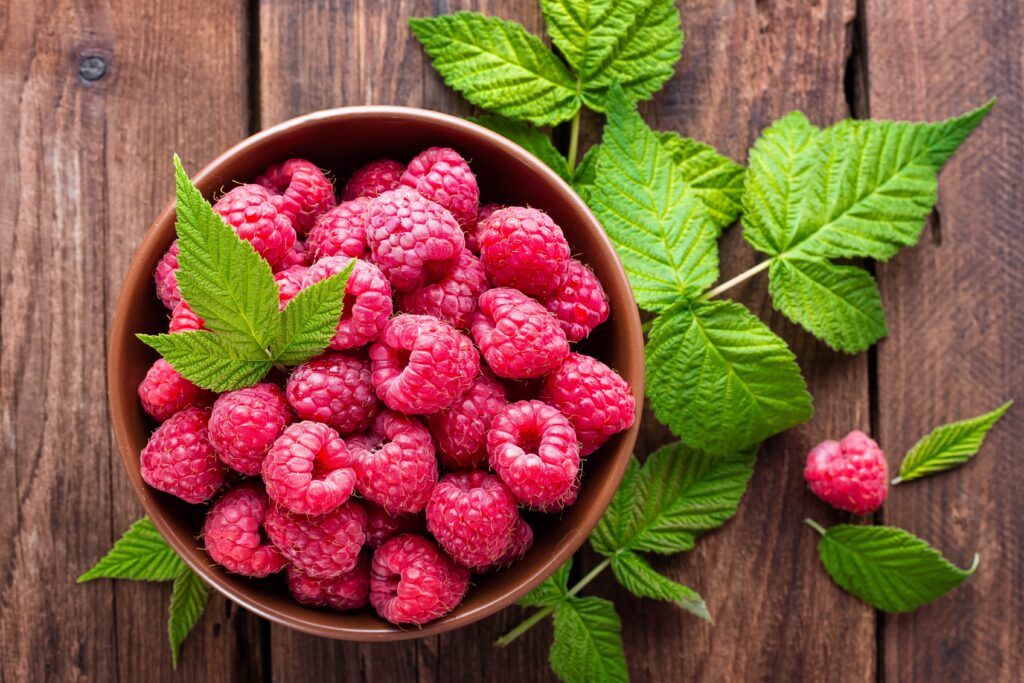
Raspberries are delicious berries. They are very popular. The consumption of raspberries in the US is increasing enormously. In the last decade, consumption has risen by over 400%.
Risks of Eating Wild Raspberries – Can You Get Sick From Eating Wild Raspberries?
When it comes to eating wild raspberries, there are some associated risks that you should be aware of. You can get sick from eating wild raspberries. Contamination, pesticides and herbicides, and potential pathogens such as bacteria, viruses, and parasites are all potential hazards that could affect your health if you choose to consume wild raspberries. It is important to take the necessary precautions and make sure that you are eating only safe and healthy wild raspberries.

Routes of Contamination of Raspberries
Before harvest:
- Insects
- Air pollution or polluted rain
- Wild and domestic animals (fecal contamination)
During and after harvest:
- Berry pickers and handlers
- Equipment used for sorting and packing
- Transport of berries
- Storage of berries
- Washing the berries
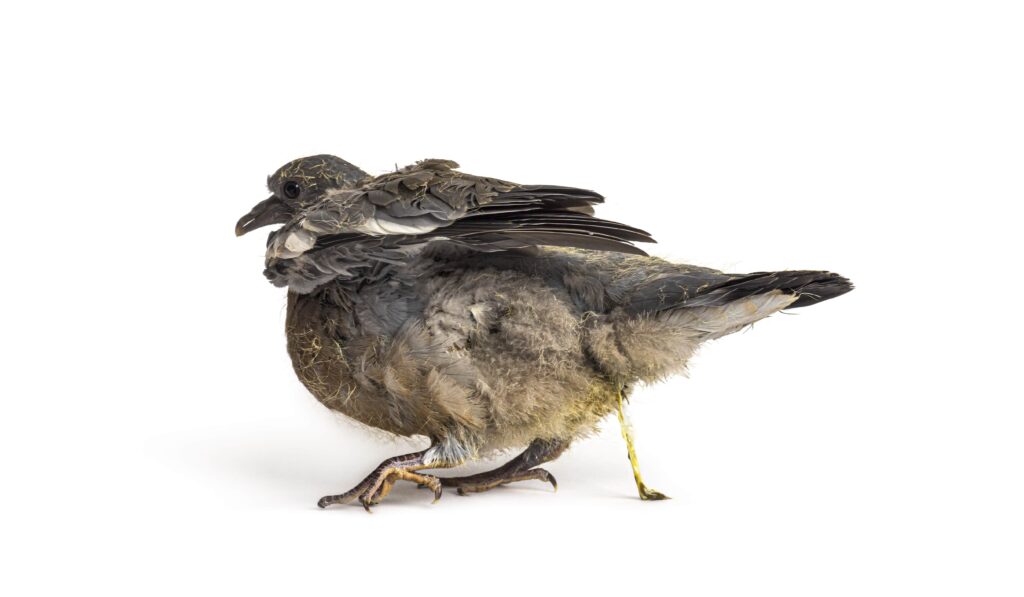
Can You Get Sick From Eating Raspberries?
Raspberries can be harmful to your health if you are unlucky. Insects can spread bacteria and viruses to raspberries from, for example, animal faeces or garbage. Wild animals can also contaminate raspberries through their faeces or by touching or having tasted the berries. Air and rain can contain unhealthy substances from factories and traffic.
A major cause of food poisoning is if the person picking the berries is sick. Poor hand hygiene can cause pathogens such as bacteria or viruses to be transferred to the raspberries.
After harvest, berries can also be contaminated by food handlers, or by poorly cleaned machinery and equipment.
If the berries are stored for too long, there is a risk of mould growth.
Finally, the berries can become contaminated if they are rinsed with water that is not clean.
It is still likely that only a small proportion of people who eat raspberries will become infected, but if you have eaten them and start to feel unwell, it is important that you seek medical attention immediately.
Food Poisoning Related to Raspberries
According to the Centre for Science in the Public Interest, fresh produce, such as berries, is still the number one vehicle for most outbreaks of foodborne illnesses. The majority of outbreaks linked to berries have been viral diseases, especially those caused by norovirus and hepatitis A.
Norovirus and Hepatitis A Virus in Raspberries
Berries may be contaminated with foodborne viruses such as norovirus and hepatitis A virus.
Norovirus can cause nausea, vomiting, diarrhoea as well as abdominal pain, headache and fever. Most people who are infected recover within a few days.
Hepatitis A virus causes the disease hepatitis A, an inflammation of the liver. The disease has a variety of symptoms and in the worst cases can last up to several months, although most people recover completely.
Norovirus and hepatitis A virus are highly contagious. Infected people excrete large amounts of the virus in both faeces and vomit. If there are viruses on the hands, they can be transferred to the raspberries and infect others. It only takes a few viruses on raspberries for another person to become infected.
Young children under the age of five are more likely to be infected by norovirus than other age groups. However, older, frail people can become seriously ill. In the case of hepatitis A, people with underlying liver disease are at greater risk of severe symptoms and acute liver failure.
Bacteria and Parasites in Raspberries
Bacteria and parasites on raspberries can also cause food poisoning. There are documented cases where the bacterium Shigella has caused illness due to infected berries. However, it is likely that other bacteria, such as Campylobacter, Salmonella, or VTEC, can also cause disease. These bacteria are found in animal feces and often cause disease after ingesting a few bacteria. Birds’ feces may have ended up on the berries. Alternatively, insects carrying these bacteria may have contaminated the berries.
Among parasites, the only documented transmission through berries has been for the intestinal protozoan parasite Cyclospora. The CDC’s 2000-2015 summary report states that, on average, two outbreaks happened every year. Each outbreak had a median of 21 cases. Most of the outbreaks were caused by fresh produce, such as raspberries. Although other pathogens might have been involved in other outbreaks, we don’t know which ones. The incubation period for nearly all parasites is relatively long, lasting from a few days (Cryptosporidium spp.) to months or even years (Echinococcus spp.). This makes it hard to identify an associated food source.
Even though washing berries with clean water can remove pathogens on the surface, they are usually packed for consumption without being washed first. This is because berries are delicate and their quality decreases when they are washed; this is especially true for raspberries.
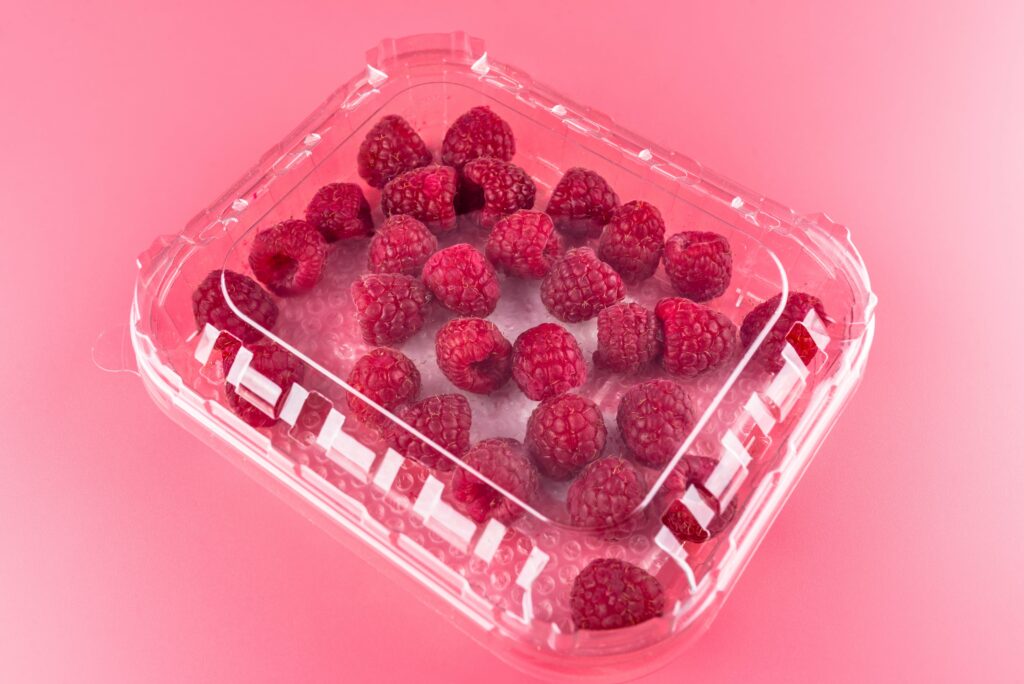
Pesticides and Herbicides
Pesticides and herbicides are chemical substances sometimes made of toxic compounds. They are used to kill certain plants, insects, and other organisms. Unfortunately, these substances can be toxic to humans if consumed in large amounts. If used in the vicinity of wild raspberry bushes, the raspberries may contain toxic compounds. Avoid eating these berries.
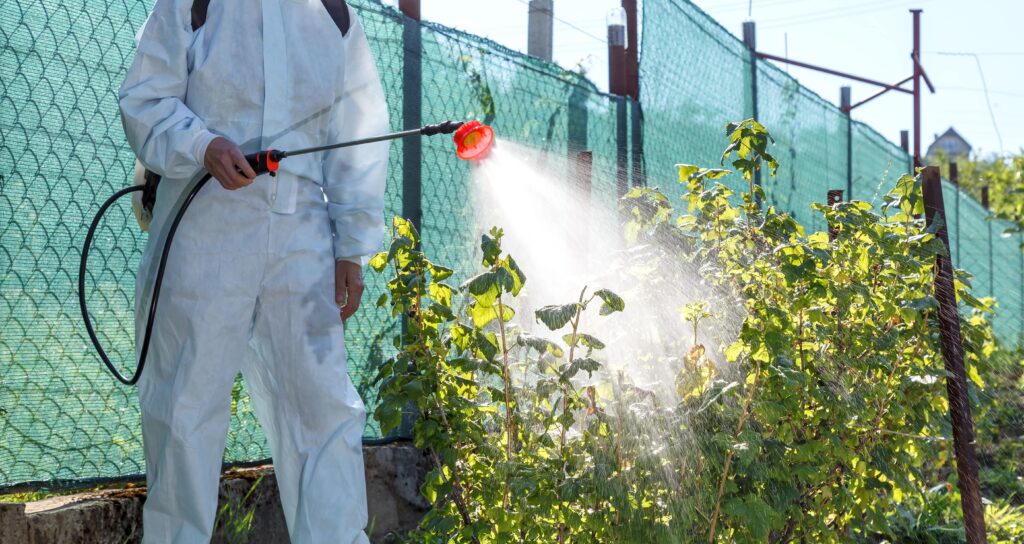
Is it Safe to Eat Wild Raspberries off the Bush?
When it comes to wild raspberries, there’s no harm in eating fresh berries off the bush, but you should be aware of the potential risks. While wild raspberries can be safe to eat, they may have been contaminated with for example pesticides, herbicides, or bacteria. It’s also important to know how to identify poisonous berries before picking and eating any wild fruit.
You should always wash and rinse the berries before eating them and make sure to use clean water. To ensure safety, it’s best to eat just one or two berries at a time and wait until you’ve established that they are edible before eating larger quantities.
How to Safely Eat Wild Raspberries
Once you have identified and harvested wild raspberries, it is important to know how to properly prepare them for consumption.
First, it is recommended that you rinse the berries in cold water and then pat them dry. This will help to reduce all types of contamination on the berries. Also, inspect the berries for any bugs or worms. Although the larvae of fruit flies are not harmful, you can first soak them in salt water if you want to get rid of them.
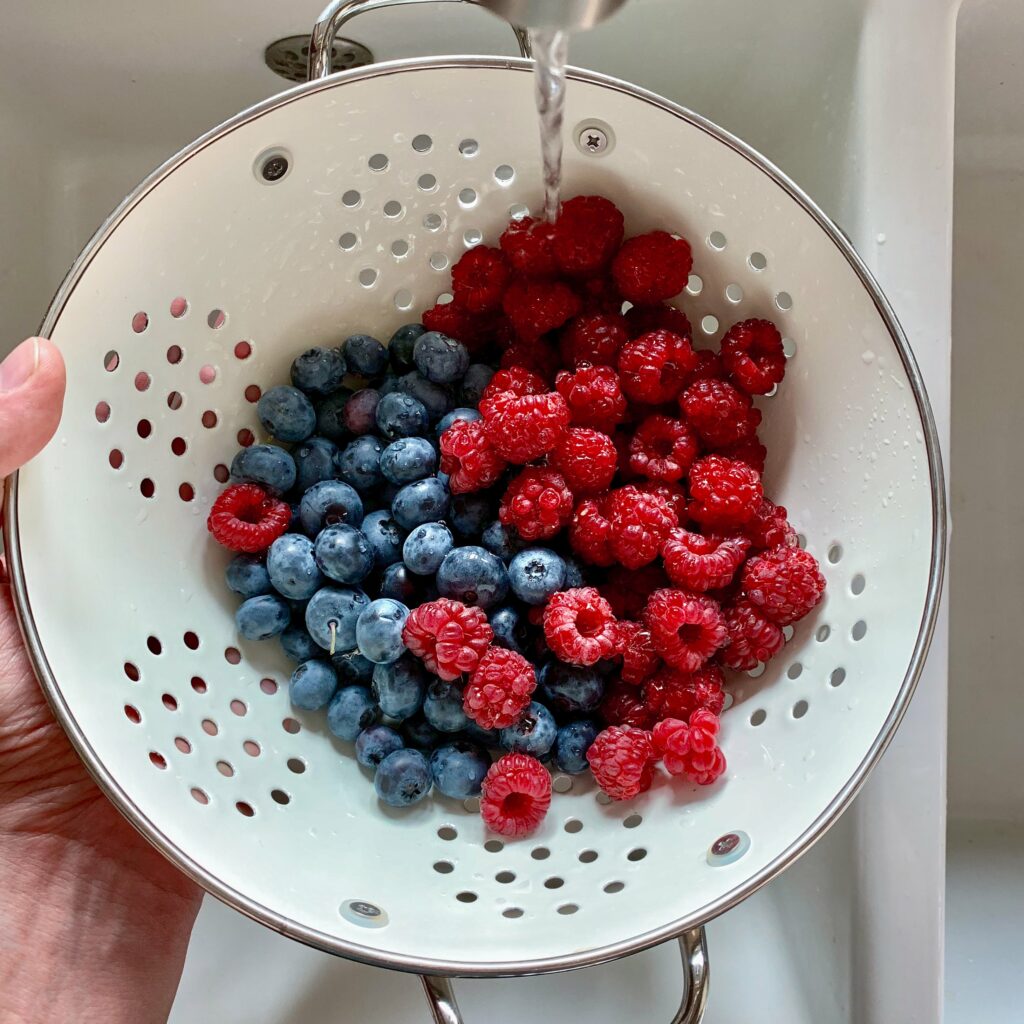
Wild raspberries can be eaten raw or cooked, depending on your preference. When cooked, which is the safest alternative, they make a great addition to pies, jams, and jellies.
Is It Safe to Eat Wild Raspberries if I Freeze Them First?
No, viruses and bacteria can survive freezing. Also, there is evidence that some parasites could withstand freezing conditions.

Is It Safe to Eat Wild Raspberries if I Cook Them First?
Yes, the pathogens associated with wild raspberries die when heated. This means that a berry is safe to eat after heating in terms of bacteria, parasites, and viruses.
Storage and Shelf Life of Wild Raspberries
Fresh wild raspberries that you have picked and are not going to eat straight away are best stored in the fridge. If you want to eat the raspberries raw – make sure to store the berries separately from raw meat. Raw meat is contaminated with bacteria that can make you sick and it is important that these do not contaminate the raspberries.
At room temperature, the raspberries will last barely a day after picking. But even in the fridge they are delicate and go bad quite quickly. After just a day or so, they can start to mould. If you’re lucky, they’ll keep fine for up to a week in the fridge. Bruises and mould on berries are signs that they are no longer good to eat.

Photo: “Spore heads – Mouldy Raspberries still in the fridge” by avlxyz is licensed under CC BY-SA 2.0.
If you heat (boil) the berries, they will keep longer in the fridge, but they have a limited shelf life. Better shelf life is achieved if the berries are made into jams. If you sterilize the jars and lids in advance and use preserving sugar or add sodium benzoate preservative, you will have a longer-lasting jam.
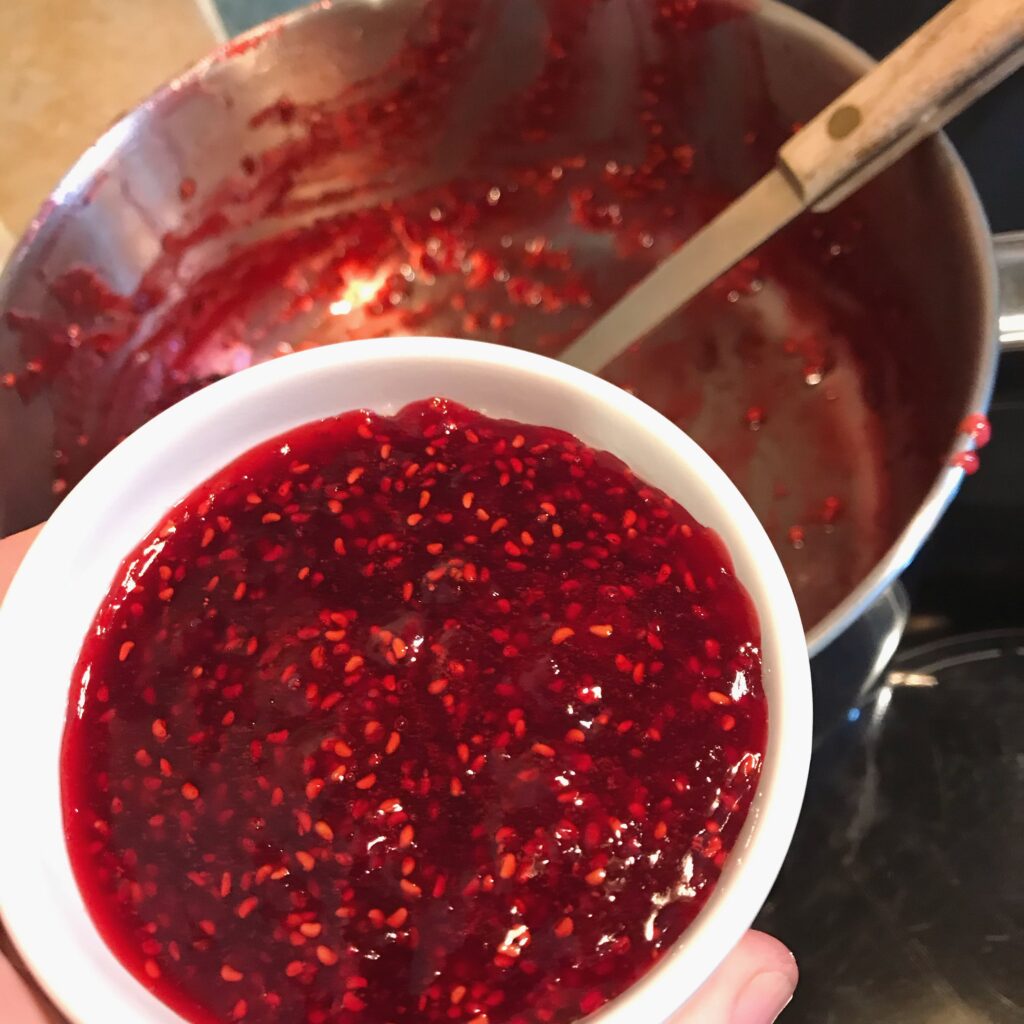
Raspberries have the longest shelf life if you store them in the freezer. They are best if you freeze them first in pieces so they don’t clump together. If in a hurry, just throw them in a freezer bag or jar and freeze them as soon as possible after picking them.
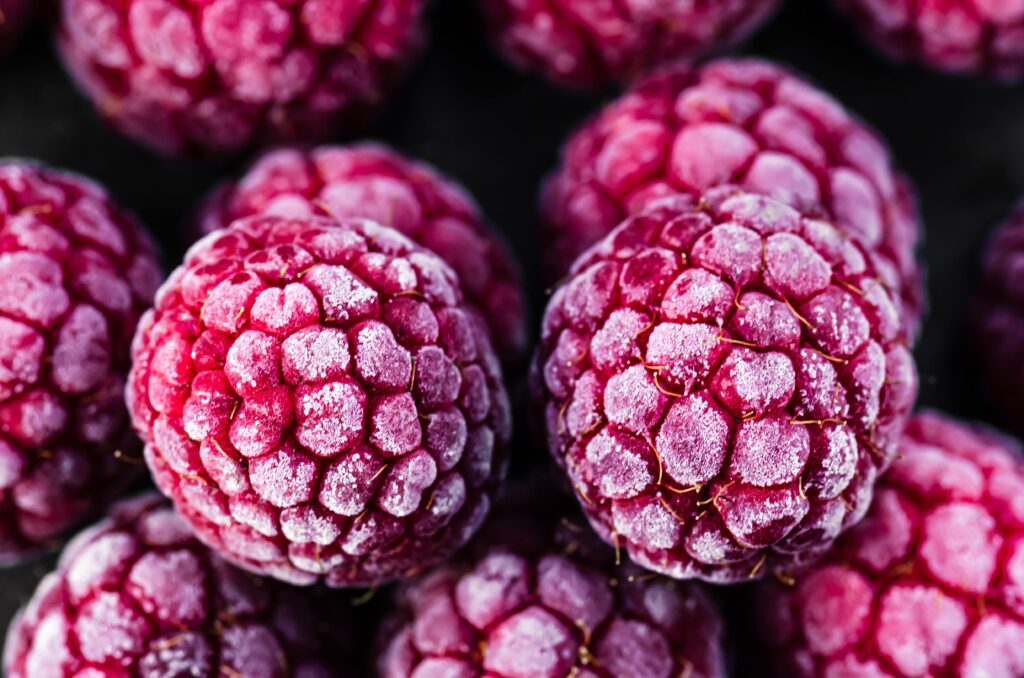
Raspberries Lookalikes – Is There Any Risk of Confusion With Poisonous Berries?
Possible confusion: It is hard to mistake a ripe raspberry for anything other than an unripe blackberry. If you’re berry picking in the Western or Midwestern United States, you’ll probably come across some non-toxic thimbleberries. The best way to tell the difference between the two berries is to look at the plants’ stems. Raspberry plants have many small to medium thorns, whereas thimbleberries don’t have any thorns. You can also sometimes tell thimbleberries and raspberries apart by looking at the berries themselves. Thimbleberries look like thimbles (which is where they get their name) – they’re flatter and wider than raspberries. Birds love thimbleberries.
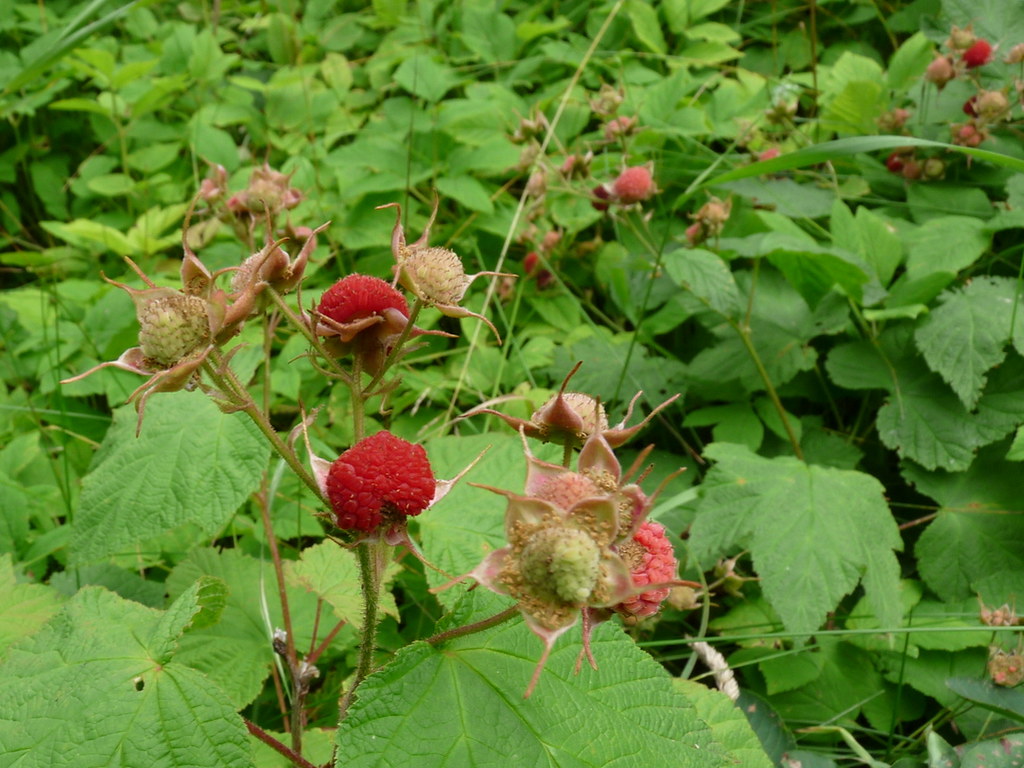
Photo: “Thimbleberries” by yooperann is licensed under CC BY-NC-ND 2.0.
Confusion With Poisonous Berries
It is important to be aware that not all berries are edible. Whenever you’re looking for wild berries, it’s important to play it safe. Make sure you can identify the plant or berry with 100% certainty, that it is edible, and that you’re not allergic to it. If you have any doubts whatsoever, don’t eat them!
When picking berries you must always be 100% sure that it is an edible berry before tasting it. Never take a chance, some berries can be poisonous!
The raspberry plant may be confused with toxic Ivy. But the berries are not at all alike, only the plants themselves are alike.

Photo: Jvlietstra, Public domain, via Wikimedia Commons
Explanation of the picture above: The lighter green leaves on the right are wild red raspberries. The darker green leaves on the left are poison ivy. The top center group of 5 dark leaves is the Virginia creeper. These three plants are often confused, but there are easy ways to tell them apart. Poison ivy always has three leaves and no thorns. Virginia creeper has 5 leaves (it may have 3 or 7 at times) and also has no thorns. Wild raspberries have thorns and can have 3 or 5 leaves that are toothed on both sides. Poison ivy and Virginia creeper produce poisonous berries that look nothing like raspberries. Poison ivy leaves will give you a bad rash if they come into contact with your skin. The leaves on other plants are usually safe. Although, some people may have a reaction to Virginia Creeper.
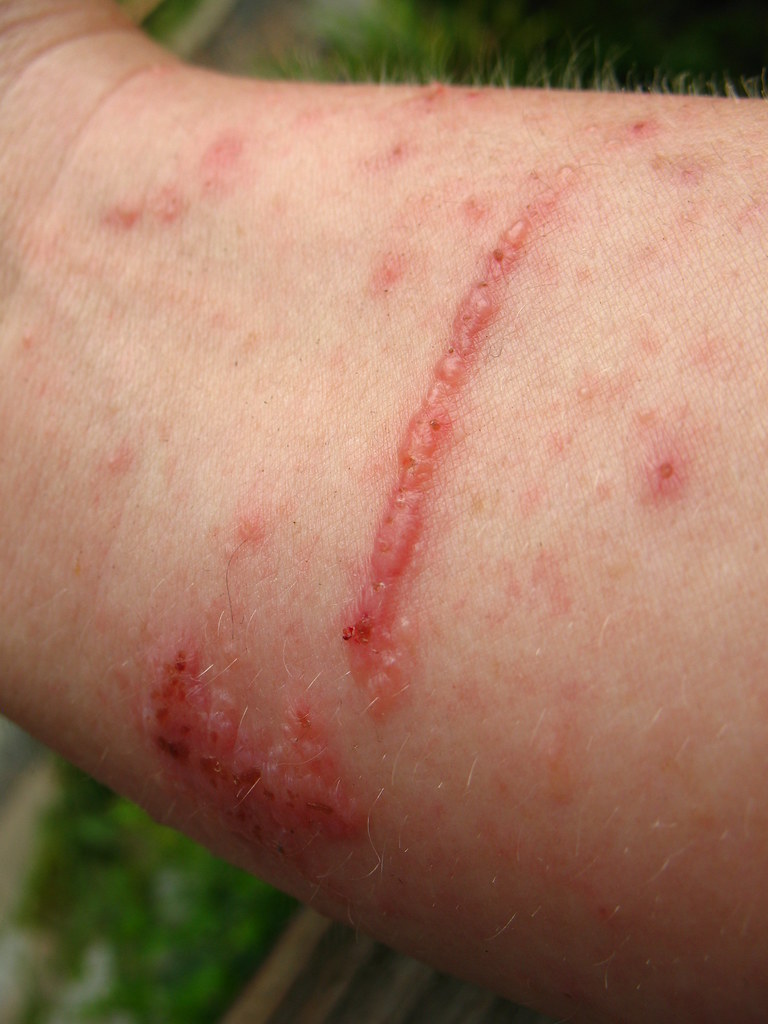
Photo: “poison ivy rash on my arm” by Vilseskogen is licensed under CC BY-NC-SA 2.0.
Sources
Park KS. Raspberry ketone increases both lipolysis and fatty acid oxidation in 3T3-L1 adipocytes. Planta Med. 2010 Oct;76(15):1654-8. doi: 10.1055/s-0030-1249860. Epub 2010 Apr 27. PMID: 20425690. Aedín Cassidy, Kenneth J. Mukamal, Lydia Liu, Mary Franz, A. Heather Eliassen, and Eric B. Rimm, High Anthocyanin Intake Is Associated With a Reduced Risk of Myocardial Infarction in Young and Middle-Aged Women, CirculationVolume 127, Issue 2, 15 January 2013; Pages 188-196, https://doi.org/10.1161/CIRCULATIONAHA.112.122408
Park KS. Raspberry ketone, a naturally occurring phenolic compound, inhibits adipogenic and lipogenic gene expression in 3T3-L1 adipocytes. Pharm Biol. 2015 Jun;53(6):870-5. doi: 10.3109/13880209.2014.946059. Epub 2014 Nov 28. PMID: 25429790. https://fdc.nal.usda.gov/fdc-app.html#/food-details/2346410/nutrients
Tefera T, Tysnes KR, Utaaker KS, Robertson LJ. Parasite contamination of berries: Risk, occurrence, and approaches for mitigation. Food Waterborne Parasitol. 2018 Apr 21;10:23-38. doi: 10.1016/j.fawpar.2018.04.002. Erratum in: Food Waterborne Parasitol. 2020 Dec 15;21:e00105. PMID: 32095598; PMCID: PMC7033989.
U.S. Fish & Wildlife Service https://www.fws.gov/
www.usda.gov
